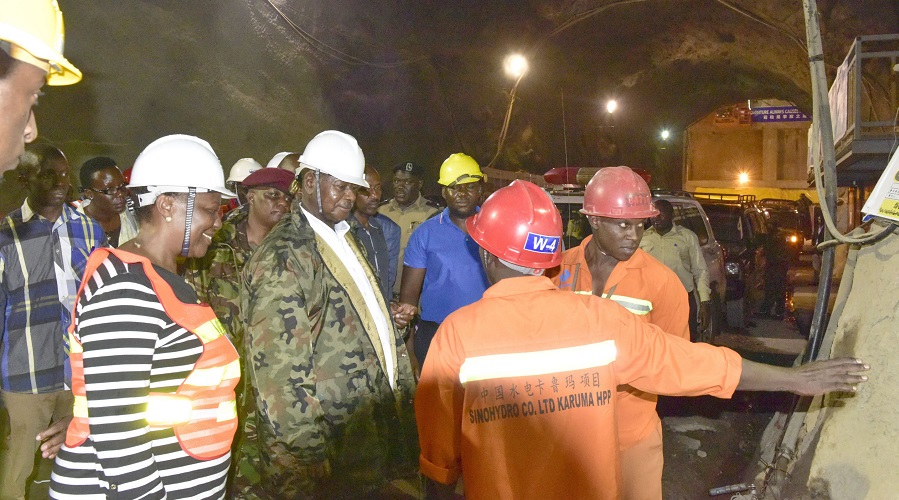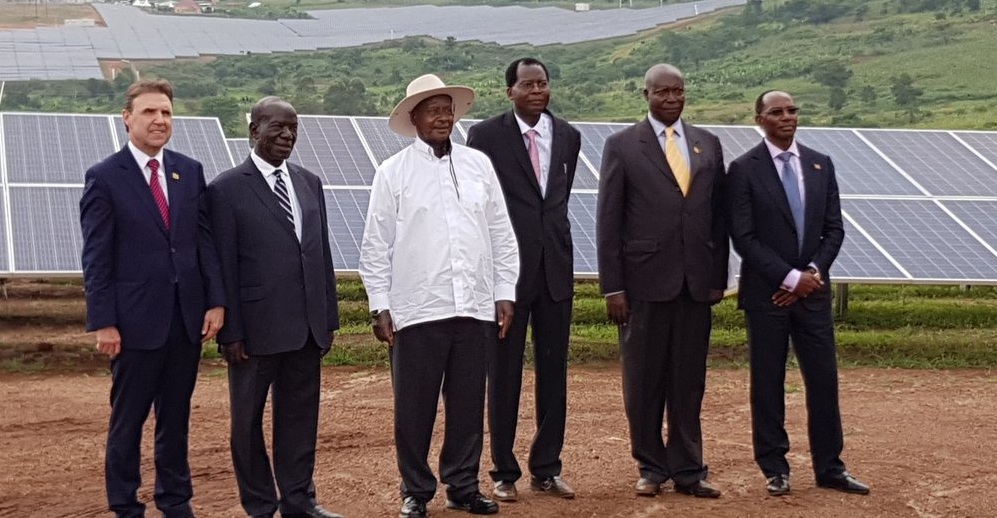SPECIAL REPORTS AND PROJECTS
Solar energy capacity to reach 200MW next year
Published
5 years agoon
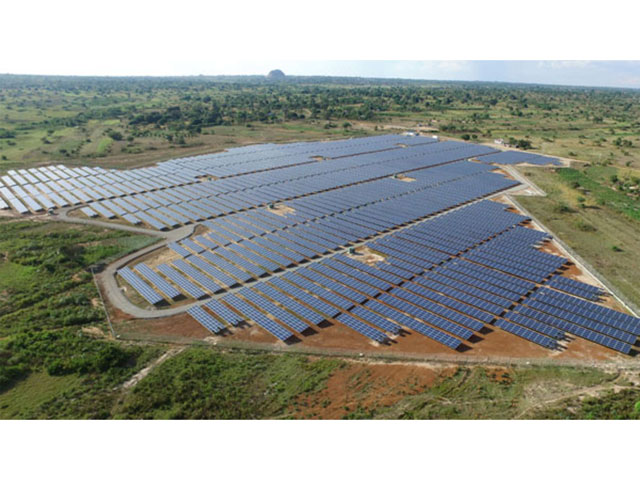
Kampala, Uganda. Xsabo Group says they plan to build another three projects, which will bring the number to five plants with a total installed capacity of 150 MW, worth a total investment of 735 Billion Shillings.
The company received funding for the Mubende project worth 63 Billion Shillings from the Uganda Development Bank and the DFCU Bank.
Uganda will have a total installed capacity of 2000MW when the delayed opening of the Karuma hydropower project happens this year. It was due for commissioning last year by the constrictors, but Synohydro of China asked for an extension of the date saying the works were at 98% completion.
The government embarked on a more complex energy mix to improve stability of supply, involving Hydro, geothermal, thermal, solar and wind energy.
Solar, one of the cleanest renewable sources is also considered the cheapest to maintain.
However, according to Julius Wandera, the head of corporate affairs at the Electricity Regulatory Authority, solar energy is also unreliable as a major source because Uganda’s weather is unpredictable.
When you are expecting a plant to give you 8 megawatts, a cloud comes and covers it, and you end up with no or less power,” he says. But he maintains that it is important to supplement the more reliable sources like thermal and hydro, despite the latter being more expensive.
According to studies at the Ministry of Energy, Uganda on average has enough sunshine to produce 5.1-kilowatt house per square meter.
Electricity demand is increasing at a rate of 8.2% annually, which translates to 125,000 new customers every year. Currently, four large solar power plants sell power to the national grid.
These include the Bufulubi in Mayuge District, the Tororo Plant and the Soroti plant, all 10MW each, as well as the largest one, the 20MW Kabulasoke solar energy plant in Mpigi district, also owned by Xsabo Group.
A 50 MW Namugoga Solar Power Station, in Wakiso District, planned for constriction by Solar Energy for Africa and Naanovo Energy Inc will be the largest yet if finished later this year. Small solar applications are often used in rural electrification projects such as Solar Home Systems or solar water heating.
The small off-grid systems come in handy because of some sparsely populated areas in Uganda where it would be less cost-effective to extend grid lines, according to the strategy.
For that, the government estimates that over 30% of the population is unlikely to be reached for the next several decades unless more investments are pout in small off-grid home systems. According to the Uganda Solar Energy Association, over 30,000 solar or photovoltaic (PV) systems have already been installed in homes in rural areas.
The 10-year Rural Electrification Strategy ending 2022 indicates that off-grid connections are supposed to have grown by 135,500 connections, with 95% of them being solar. The off-grid connection numbers are supported by the growing number of supply and distribution companies that offer products on credit or hire-purchase, where a customer pays for as low as 500 Shillings per day.
In 2013, the government awarded a contract to Ergon Solair, a Taiwanese-US venture to build a 500MW solar plant divided into two four parks of 125MW each. It was supposed to be completed by 2016. It would be the largest solar plant in Africa and the world alongside the 500MW Noor Solar Complex in the Agadir district of Morocco.
In February, the China Energy Engineering Corporation (CEEC) announced plans to build a 500MW solar power plant in Uganda in two phases. The Electricity Regulatory Authority-ERA said they had not received any notification of that kind from the Chinese company.
Xsabo is also implementing another project dubbed the Xsabo Lira Power Station or Xsabo Lira Solarline, a US$45 million, with a capacity to generate 50 MW. This is a public-private partnership between Xsabo and Lira District Administration and is also expected to be completed by December 2022, completing a total investment by Xsabo of about 200 Million United States Dollars.
Original Source: URN via independent.co.ug
Related posts:

 First solar hydro hybrid plant paused
First solar hydro hybrid plant paused
 FAO launches solar powered irrigation systems in Kalungu
FAO launches solar powered irrigation systems in Kalungu
 Solar power capacity to hit 50MW
Solar power capacity to hit 50MW
 Coalition for Rainforest Nations announces sale of 6,106 REDD credits from Papua New Guinea to Blackstone Energy Services
Coalition for Rainforest Nations announces sale of 6,106 REDD credits from Papua New Guinea to Blackstone Energy Services
SPECIAL REPORTS AND PROJECTS
Britain, Netherlands withdraw $2.2 billion backing for Total-led Mozambique LNG
Published
15 hours agoon
December 17, 2025
CONSTRUCTION HALTED IN 2021, BUT DUE TO RESTART
PROJECT CAN PROCEED WITHOUT UK, DUTCH FINANCING, TOTAL HAS SAID
CRITICISM FROM ENVIRONMENTAL, HUMAN RIGHTS GROUPS
Related posts:

 Uganda, Total sign crude oil pipeline deal
Uganda, Total sign crude oil pipeline deal
 Witness Radio – Uganda, Community members from Mozambique and other organizations around the world say NO to more industrial tree plantations
Witness Radio – Uganda, Community members from Mozambique and other organizations around the world say NO to more industrial tree plantations
 NGOs file suit against Total over Uganda oil project
NGOs file suit against Total over Uganda oil project
 Agribusiness Company with financial support from UK, US and Netherlands is dispossessing thousands.
Agribusiness Company with financial support from UK, US and Netherlands is dispossessing thousands.
SPECIAL REPORTS AND PROJECTS
The secretive cabal of US polluters that is rewriting the EU’s human rights and climate law
Published
2 weeks agoon
December 5, 2025
Leaked documents reveal how a secretive alliance of eleven large multinational enterprises has worked to tear down the EU’s flagship human rights and climate law, the Corporate Sustainability Due Diligence Directive (CSDDD). The mostly US-based coalition, which calls itself the Competitiveness Roundtable, has targeted all EU institutions, governments in Europe’s capitals, as well as the Trump administration and other non-EU governments to serve its own interests. With European lawmakers soon moving ahead to completely dilute the CSDDD at the expense of human rights and the climate, this research exposes the fragility of Europe’s democracy.
Key findings
- Leaked documents reveal how a secretive alliance of eleven companies, including Chevron, ExxonMobil, and Koch, Inc., has worked under the guise of a “Competitiveness Roundtable” to get the Corporate Sustainability Due Diligence Directive (CSDDD) either scrapped or massively diluted.
- The companies, most of which are headquartered in the US and operate in the fossil fuel sector, aimed to “divide and conquer in the Council”, sideline “stubborn” European Commission departments, and push the European People’s Party (EPP) in the European Parliament “to side with the right-wing parties as much as possible”.
- Chevron and ExxonMobil were in charge of mobilising pressure against the CSDDD from non-EU countries. The Roundtable companies endeavoured to get the CSDDD high on the agenda of the US-EU trade negotiations and also worked on mobilising other countries against the CSDDD, in order to disguise the US influence.
- Roundtable companies paid the TEHA Group – a think tank – to write a research report and organise an event on EU competitiveness, which echoed the Roundtable’s position and cast doubt on the European Commission’s assessment of the economic impact of the CSDDD.
While Europeans were told that their governments were negotiating a landmark law to hold corporations accountable for human rights abuses and climate damage, a secretive alliance of US fossil fuel giants was working behind the scenes to destroy it. Collaborating under the innocent-sounding name ‘Competitiveness Roundtable’, eleven multinational enterprises have worked closely to eviscerate several EU sustainability laws, including the Corporate Sustainability Due Diligence Directive (CSDDD) and the Corporate Sustainability Reporting Directive (CSRD). This Competitiveness Roundtable may be unknown, but its members are a who’s-who of polluting, mainly US, multinationals, including Chevron, ExxonMobil, and Dow. The group seems to have run rings around all branches of the EU and the Trump administration to get what they want: scrapping, or at least hugely diluting, the CSDDD.

Leaked documents obtained by SOMO reveal how, under the pretext of the now-near-magical concept of ‘competitiveness’, these companies plotted to hijack democratically adopted EU laws and strip them of all meaningful provisions, including those on climate transition plans, civil liability, and the scope of supply chains. EU officials appear not to have known who they were up against. But the documents obtained by SOMO show a high level of organisation and strategising with a clear facilitator: Teneo, a US public relations and consultancy company.
The documents indicate that many of the companies involved wanted to stay hidden from view. After all, if it were widely known that a secretive group of mostly American fossil fuel companies like Chevron, ExxonMobil, and Koch, Inc. was working as a coordinated organisation to dilute an EU climate and human rights law, that might raise questions and serious concern among the public and the policymakers they were targeting. Many of the companies in the Roundtable have never publicly spoken out against the CSDDD.
Big Oil’s ‘Competitiveness Roundtable’
The Competitiveness Roundtable is dominated by fossil fuel companies, including three Big Oil companies (ExxonMobil, Chevron, TotalEnergies) and three other companies with activities in the oil and gas sector (Koch, Inc., Honeywell, and Baker Hughes). Other members are Nyrstar (minerals and metals, a subsidiary of Trafigura Group); Dow, Inc. (chemicals); Enterprise Mobility (car rentals); and JPMorgan Chase (finance).
Teneo, the Roundtable’s coordinator, has a track record(opens in new window) of working with fossil fuel companies, including Chevron, Shell, and Trafigura, and was hired by the government of Azerbaijan to handle public relations(opens in new window) when it hosted the COP29 climate conference.
In February 2025, the European Commission published the Omnibus I proposal(opens in new window), which aims to “simplify” several EU sustainability laws, including the CSDDD. The documents obtained by SOMO reveal that the Roundtable companies, which have been meeting weekly since at least March 2025, worked on deep interventions within each of the three EU institutions to get the Omnibus I package to align exactly with their views. The EU institutions are expected to reach a final agreement on Omnibus I by the end of 2025.
The documents reveal that the Roundtable companies’ activities in the Parliament are far more significant than what is visible in the EU Transparency Register(opens in new window). Eight of the Roundtable’s lobbying meetings during the Strasbourg plenary sessions of May and June 2025, listed in the Transparency Register, show Teneo as the only attendee, thereby failing to disclose the names of other Roundtable companies that participated in these meetings. Another three meetings the Roundtable held were not found in the EU Transparency Register(opens in new window) at all.
“Divide and conquer” the Council
In the European Council, the Roundtable plotted to “divide and conquer” EU governments to get the climate article in the CSDDD deleted. In June 2025, during the final weeks of negotiations in the Council on the Omnibus I proposal, the Roundtable discussed lobbying EU government leaders to “intervene politically” to ensure its priorities were included in the Council’s negotiation mandate. Subsequently, German Chancellor Merz and French President Macron reportedly(opens in new window) personally intervened(opens in new window) in the Council’s political process, leading to a dramatic dilution(opens in new window) of the texts(opens in new window) negotiated in the months before the intervention. Several of the changes made to the texts strongly align with the Roundtable’s demands, including delaying and substantially weakening the climate obligations, scrapping EU civil liability provisions, and limiting the responsibility of companies to take responsibility for their supply chains (the ‘Tier 1’ restriction).

Competitiveness Roundtable meeting document, 11 July 2025.
Additionally, the documents reveal that the Roundtable is still aiming to drum up a “blocking minority” to overturn the Council’s negotiation mandate during the trilogue negotiations, which started in November 2025. By “tak[ing] advantage of the ‘weak’ Council negotiating mandate” and disagreements between EU Member States on “contentious articles”, the Competitiveness Roundtable companies hope to force the Danish Council presidency to give up on including any form of climate obligations in the CSDDD – despite EU Member States’ agreement on this in the June 2025 Council mandate(opens in new window) .
To implement the divide-and-conquer strategy, the Roundtable assigned specific companies to “establish rapporteurships” with different EU governments. TotalEnergies would target the French, Belgian, and Danish governments, and ExxonMobil would target Germany, Hungary, the Czech Republic, and Romania.


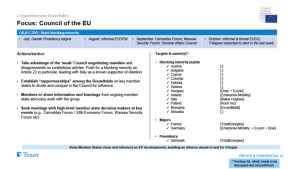
Circumventing “stubborn” European Commission departments
The Roundtable also discussed working on “circumvent[ing]” two “stubborn” European Commission departments involved in the Omnibus political process, DG JUST and DG FISMA, which, in their view, were “unlikely to be willing to see our side of the story”. According to the documents, DG JUST opposed deleting the climate article and restricting the Directive’s scope to only very large enterprises. The Roundtable aimed to diminish the role of these departments by pressuring President Von der Leyen and Commissioners McGrath (DG JUST) and Albuquerque (DG FISMA) by “organising letters from Irish and German business groups” and using an event held by the European Roundtable for Industry to “target” Von der Leyen and McGrath.
Read full report: Somo.nl
Source: Somo
Related posts:

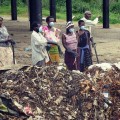 Victims of human rights violations in Uganda still waiting for redress
Victims of human rights violations in Uganda still waiting for redress
 UN Human Rights Chief urges EU leaders to approve key business and human rights legislation
UN Human Rights Chief urges EU leaders to approve key business and human rights legislation
 Business, UN, Govt & Civil Society urge EU to protect sustainability due diligence framework
Business, UN, Govt & Civil Society urge EU to protect sustainability due diligence framework
 Development financiers fuel human rights abuses – New Report
Development financiers fuel human rights abuses – New Report
SPECIAL REPORTS AND PROJECTS
The Carbon Mirage in Uganda: How reforestation initiatives are turning into sources of displacement and poverty?
Published
2 weeks agoon
December 4, 2025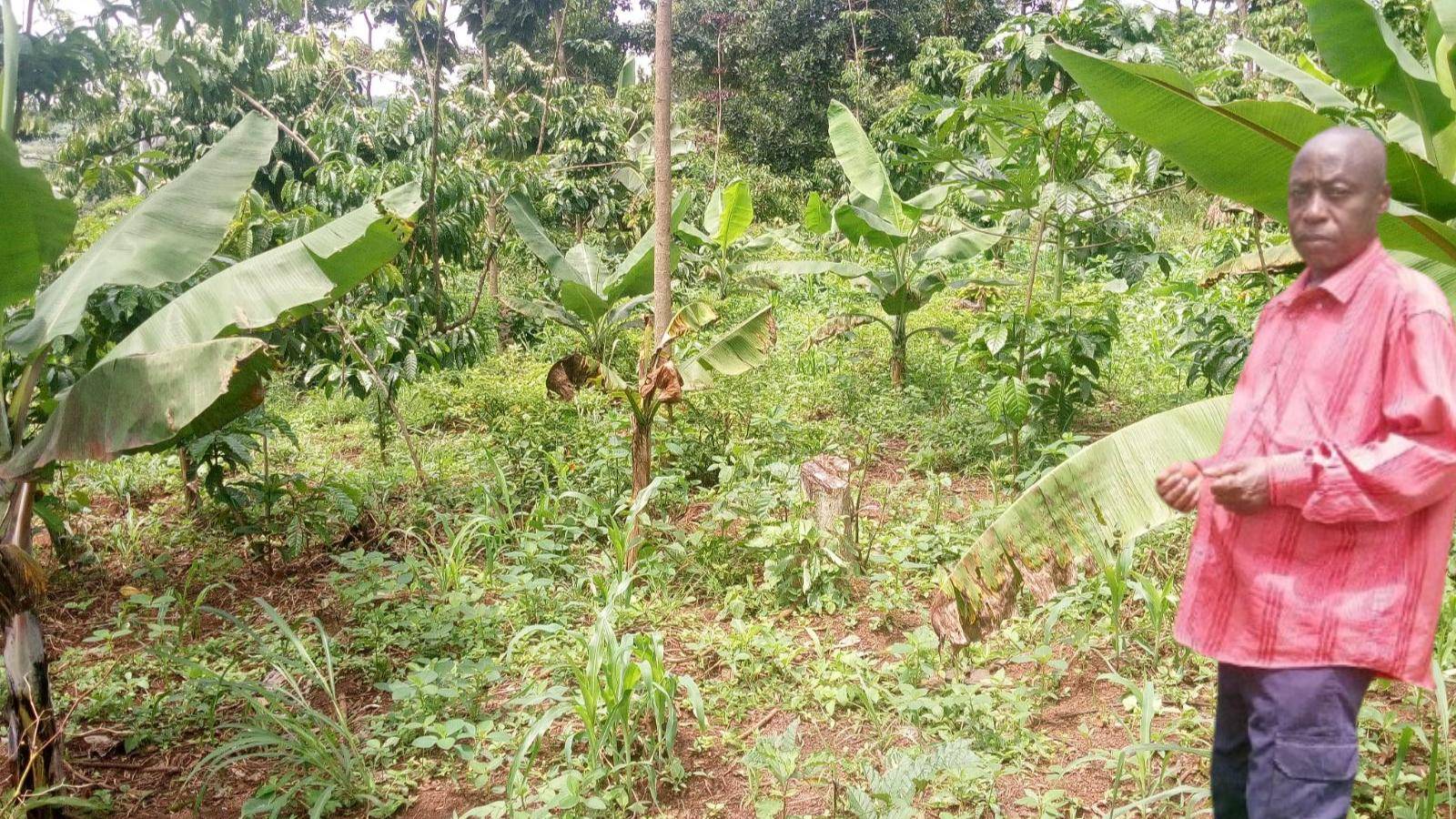
By Witness Radio team
Uganda’s reforestation projects are promoted as solutions to mitigate the climate crisis. But as they are implemented, there’s a deepening of inequality, destruction of lives, and a shift of environmental burdens onto the World’s poorest.
When 63-year-old Nalugo Rosemary talks about the day her life fell apart, a thousand untold tales are carried in her voice.
“In 2004,” she recalls, “Kajura and Peter, who were working for the Kikonda plantation, came with the police and arrested me. They said I was encroaching on company land. I was cultivating my own land. They beat me, threw me in detention with my two young children… for three days.”
Nalugo is one of the over thousands of people whose livelihoods were destroyed to pave the way for Kikonda’s reforestation project, raising questions about the legality and ethics of land acquisitions involved in these initiatives. Her land, her crops, her home, her livelihoods all vanished in a project that, on paper, was supposed to help save the planet and support livelihoods.
These Carbon projects are internationally celebrated for environmental protection. Still, the establishment of monoculture plantations of eucalyptus and pine trees, such as those on the Kikonda land, raises concerns about biodiversity loss and ecological imbalance, which are not addressed in the current description.
Global Woods manages the area under a 49-year lease, but systemic transparency and human rights issues remain, raising concerns about accountability in carbon projects.
More than 30 villages had already established a prosperous agricultural and cattle-keeping community before the eviction; some had been there since the 1980s, while local authorities had moved others in the 1990s. Nalugo was one of them.
“Some of us were called by leaders by then and told to farm. The leaders claimed we should not die poor, yet there was free, available land, meaning we should use the forest reserve land. The leaders said they wanted us to be better in the future.”
But in 2002–2003, the “future” arrived in the form of bulldozers, armed soldiers, and company workers harvesting residents’ crops on tractors as their owners watched helplessly.
The plantation insists it was not involved in forced evictions. Despite evictions happening over 23 years back, people living on the boundary of the plantation, like Kabangira George, who chairs a committee of the affected group, say the trauma never ended.
“People are beaten and not allowed to access the forest. They don’t allow us to access the water dams. Our cows and goats are seized, and they demand money ranging from 20,000 to 50,000 shillings to release our animals.” He added while speaking to the Witness Radio team.
A few kilometers away, the story repeats itself almost word-for-word. In Mubende, the New Forests Company (NFC), a British enterprise, displaced 901 families to establish the Namwasa Forest Reserve reforestation project.
“My community was affected by the New Forest Company project. It affected 901 families, totaling over 10,000 people across seven villages in Mubende district. Crops were razed, homes burnt, animals killed. Children died while fleeing armed soldiers during the brutal evictions to give way for the plantation, Mr. Ndagize revealed.
Unfortunately, the Witness Radio team was unable to speak directly with company representatives to ask for their perspective. On its website, NFC claims extensive social benefits: schools, water points, and jobs. But to residents like Julius Ndagize, these claims feel like a cruel joke.
“They call this development,” he says bitterly. “But it brought only suffering. Poverty and backwardness. The schools they claim to have built are so expensive that poor people like us can’t afford to educate our children in them.”
His neighbor Jane (not her real name) adds that the community is not prioritized even for job opportunities and is not allowed to access their former lands.
“We request jobs from the company, but they don’t hire us. They hire people from far away,” she says. “We are not allowed to access forest lands, or even use some roads within. They are dangerous. When you are found there, you risk being attacked by company workers.”
Hoping to find a better example, our team traveled to western Uganda to investigate ECOTRUST’s Trees for Global Benefit (TGB) — a project praised globally for community-centred carbon offsetting.
ECOTRUST is a not-for-profit conservation organization established in Uganda in 1999 to conserve biological diversity and enhance social welfare by promoting innovative and sustainable environmental management. In that capacity, it receives and manages both private and public funding. In 2003, the organisation launched its leading Trees for Global Benefit (TGB) program – a carbon-offsetting scheme – that has been implemented in the Hoima and Kikuube Districts since 2013.
The programme encourages small-scale farmers to plant native regional trees on part of their land, rather than growing food as they did before, characterising it as a long-term investment.
Here, small-scale farmers were encouraged to convert farmland into tree plantations. Before its setup and implementation, people were told they would benefit from the carbon trading project and that it would bring financial stability. Mr. Rukundo Hannington Herbert of Butimba East Village, Budoma parish, was a budding farmer and businessman who claimed he was coerced into the project. He remembers being told he would “become rich.”
“I cut my bananas that fed my family and planted trees,” he says.
“After 18 years, I have been paid only 440,000, then 280,000, then 150,000. Is this the big money they promised?”
Many farmers who had joined the project are now withdrawing, saying it has pushed them back into poverty and even into extreme hunger. They have begun cutting down the trees and returning to fast-growing crops. “I have cut down these trees because they were not yielding as we were promised initially. I was dying of poverty.” He told the Witness Radio team.
Community educator Jorum Basiima says farmers were never informed about carbon buyers, pricing, or calculations.
“We don’t even know who buys carbon. We see people come and measure trees.” He reveals in an interview with Witness Radio that the project lacked transparency and only coerced people into planting, telling them they would earn a lot.
In an extensive report titled “Finance for Integrated Landscape Management: De-risking Smallholder Farmer Investments in Integrated Landscape Management,” ECOTRUST explains its specifically developed financial mechanism and outlines 12 key principles for the successful implementation of the project. Principle 8 states: “The earnings from carbon, along with the long-term carbon agreements, provide incentives and collateral for the participating households to develop multiple income streams.”
But Mr. Basiima insists, “We are only given money to do management, to manage the trees at the earlier stage. But for us, we don’t sell carbon. And we don’t even know, we don’t know any other thing, or even what carbon itself is.”
For a project meant to empower communities and restore landscapes, this absence of transparency reveals a troubling gap between promise and reality.
International Carbon expert Jonathan Crook, who works with Carbon Market Watch, a Belgium-based Non-Government Organisation, explains that Carbon credits often don’t deliver what they promise.
“A carbon credit is meant to represent one tonne of CO2 that has been avoided or reduced, or even removed from the atmosphere. But in many cases, a carbon credit cannot reliably guarantee this outcome. Many peer-reviewed scientific articles, as well as findings from NGOs, journalists, and carbon credit rating agencies, have found significant quality problems across a range of carbon credits, undermining trust that they actually deliver what’s being claimed.” He told the Witness Radio team.
Further, he states that the issue is not carbon markets alone but how companies use or misuse carbon credits. Many credits overstate or fabricate climate benefits. And global polluters buy cheap credits to avoid reducing their own emissions.
“The problem is that in many cases carbon credits are being used by companies, and increasingly by countries, to claim that they’re net-zero or carbon-neutral. The use of carbon credits can have real-world consequences, potentially delaying internal climate action for some of the world’s heaviest polluters, who need to reduce their own emissions first and foremost, he adds.
Crook insists that carbon projects must never violate human rights, yet cases like Namwasa, Kikonda, and the Hoima TGB scheme show that abuses are not exceptions; they are symptoms of a systemic failure.
Related posts:

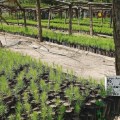 A Norwegian company is committing carbon violence in Uganda – Report
A Norwegian company is committing carbon violence in Uganda – Report
 Thousands of smallholder farmers in Uganda have forcefully lost their land in exchange for carbon offset projects.
Thousands of smallholder farmers in Uganda have forcefully lost their land in exchange for carbon offset projects.
 Uganda: Local communities claim they are not benefiting from Green Resources’ subsidiary’s carbon credit initiative; incl. company’s comments
Uganda: Local communities claim they are not benefiting from Green Resources’ subsidiary’s carbon credit initiative; incl. company’s comments
 The Rush for Carbon Concessions: More Land Theft and Deforestation
The Rush for Carbon Concessions: More Land Theft and Deforestation

Four hundred fifty victim families of the Oil Palm project in Buvuma are to receive compensation by this Friday – Witness Radio

Britain, Netherlands withdraw $2.2 billion backing for Total-led Mozambique LNG
Hidden iceberg: A new report identifies large scale industrial agriculture, livestock, and mining sectors as leading sources of attacks against land and environmental defenders worldwide.

Women’s groups demand equality in land tenure security to boost food production.

Happening shortly! Kenya’s upcoming court ruling on the Seed Law could have a significant impact on farmers’ rights, food sovereignty, and the country’s food system.

Activists storm TotalEnergies’ office ahead of G20 Summit, demand end to fossil fuel expansion in Africa

EALA members renew push for unified sub-regional Agroecology Law during Mukono meeting.

Kenyan farmers secure right to share local seeds in court ruling

Innovative Finance from Canada projects positive impact on local communities.
Over 5000 Indigenous Communities evicted in Kiryandongo District
Petition To Land Inquiry Commission Over Human Rights In Kiryandongo District
Invisible victims of Uganda Land Grabs
Resource Center
- REPARATORY AND CLIMATE JUSTICE MUST BE AT THE CORE OF COP30, SAY GLOBAL LEADERS AND MOVEMENTS
- LAND GRABS AT GUNPOINT REPORT IN KIRYANDONGO DISTRICT
- THOSE OIL LIARS! THEY DESTROYED MY BUSINESS!
- RESEARCH BRIEF -TOURISM POTENTIAL OF GREATER MASAKA -MARCH 2025
- The Mouila Declaration of the Informal Alliance against the Expansion of Industrial Monocultures
- FORCED LAND EVICTIONS IN UGANDA TRENDS RIGHTS OF DEFENDERS IMPACT AND CALL FOR ACTION
- 12 KEY DEMANDS FROM CSOS TO WORLD LEADERS AT THE OPENING OF COP16 IN SAUDI ARABIA
- PRESENDIANTIAL DIRECTIVE BANNING ALL LAND EVICTIONS IN UGANDA
Legal Framework
READ BY CATEGORY
Newsletter
Trending
-

 SPECIAL REPORTS AND PROJECTS2 weeks ago
SPECIAL REPORTS AND PROJECTS2 weeks agoThe Carbon Mirage in Uganda: How reforestation initiatives are turning into sources of displacement and poverty?
-

 WITNESS RADIO MILESTONES2 weeks ago
WITNESS RADIO MILESTONES2 weeks agoA Global Report reveals that Development Banks’ Accountability Systems are failing communities.
-

 MEDIA FOR CHANGE NETWORK2 weeks ago
MEDIA FOR CHANGE NETWORK2 weeks agoUsing agroecology as a climate adaptation strategy and fighting extreme weather: A case of a retired teacher farming on a rocky terrain in Mukono, Uganda.
-

 SPECIAL REPORTS AND PROJECTS2 weeks ago
SPECIAL REPORTS AND PROJECTS2 weeks agoThe secretive cabal of US polluters that is rewriting the EU’s human rights and climate law
-

 MEDIA FOR CHANGE NETWORK3 days ago
MEDIA FOR CHANGE NETWORK3 days agoWomen’s groups demand equality in land tenure security to boost food production.
-

 MEDIA FOR CHANGE NETWORK1 week ago
MEDIA FOR CHANGE NETWORK1 week agoExperts push for a National Bamboo Policy to strengthen climate mitigation efforts.
-
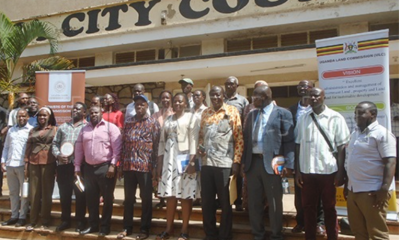
 MEDIA FOR CHANGE NETWORK7 days ago
MEDIA FOR CHANGE NETWORK7 days agoLand commission starts updating govt land countrywide.
-

 MEDIA FOR CHANGE NETWORK3 days ago
MEDIA FOR CHANGE NETWORK3 days agoTension as Project-Affected Persons demand to meet Uganda’s President over Oil Palm growing on their grabbed land.




